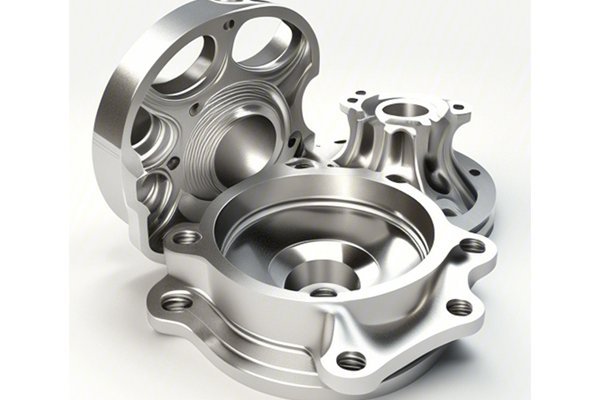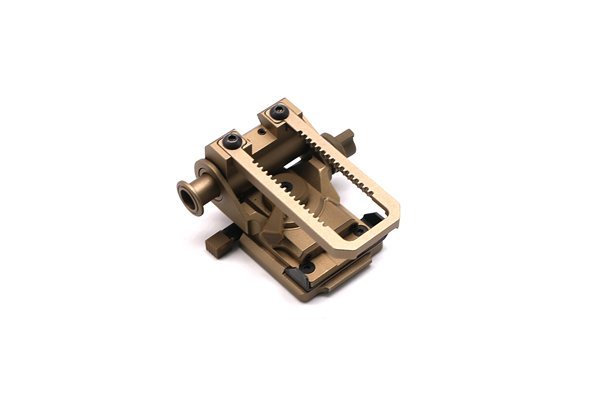Did you know that the global CNC machining market is expected to reach approximately $100 billion by 2026? This dramatic growth underscores the increasing reliance on computer numerical control (CNC) machining technologies across industries, particularly for fabricating custom aluminum and stainless steel parts. As businesses strive for efficiency, precision, and customization in manufacturing processes, CNC machining plays a pivotal role in bringing their visions to life.
In this comprehensive blog, we will delve deep into the world of CNC machining, focusing on its advantages for custom aluminum and stainless steel components. By the end of this read, you’ll have a profound understanding of not just the ‘how’ but also the ‘why’ behind incorporating CNC machining into your manufacturing workflow.
Understanding CNC Machining
What is CNC Machining?
CNC machining is an advanced manufacturing process that utilizes computer software to control machine tools. This process can include various types of machines such as lathes, mills, routers, and grinders. By using numerical control, manufacturers can create detailed and intricate parts with a level of precision that is practically unattainable through manual machining.
Types of CNC Machining Processes
Why Choose CNC Machining?
CNC machining stands out for various reasons, particularly when producing parts from metals like aluminum and stainless steel. Here are several compelling benefits:
One of the most significant advantages of CNC machining is its unparalleled precision. With CNC technology, you can achieve tolerances as tight as ±0.01 mm. This capability is crucial for industries that require high-quality parts, such as aerospace and automotive.
CNC machines can replicate designs accurately on every run. This consistency reduces variability and ensures that thousands of parts produced are identical to each other, which is essential for large production runs.
CNC machining allows manufacturers to create complex geometries and intricate designs that would be impossible or very difficult to fabricate using traditional methods. This versatility enables the production of custom parts tailored to specific applications.
Aluminum and stainless steel are two of the most commonly used materials in CNC machining due to their strength, lightweight properties, and resistance to corrosion. CNC machining is adept at handling these materials, enabling manufacturers to achieve optimal results tailored to their specific needs.
CNC machining significantly reduces production time compared to manual machining. Once the initial programming is complete, machines can operate without the need for human intervention, leading to faster turnaround times and higher overall productivity.
Advanced CNC technology minimizes material waste during the machining process. With precise cutting, manufacturers can recover more usable material, ultimately leading to cost savings.
CNC machining offers an easy way to scale production. Whether producing a small batch of custom parts or a large volume of components, manufacturers can adjust machine settings and programming to meet varying production needs.
Choosing the Right Materials: Aluminum vs. Stainless Steel
While both aluminum and stainless steel are excellent material choices for CNC machining, they have unique properties that may make one more suitable than the other for specific applications.
Aluminum
Advantages:
Disadvantages:
Stainless Steel

Advantages:
Disadvantages:
The CNC Machining Process for Custom Aluminum and Stainless Steel Parts
Now that we understand the benefits of CNC machining, let’s dive into the steps involved in the CNC machining process specifically for custom aluminum and stainless steel parts.
CAD Software
The process begins with creating a detailed design using CAD (Computer-Aided Design) software. This digital model specifies the dimensions, tolerances, and variations for the part.
Prototyping
A prototype may be created using 3D printing or CNC machining itself to verify design accuracy and make necessary adjustments. Rapid prototyping allows manufacturers to identify flaws early in the design process.
Choosing the right material based on application requirements is crucial. Both aluminum and stainless steel offer distinct advantages, and this decision will impact the machining parameters.
Once the design and material are ready, the next step is to translate the CAD model into a format that the CNC machine can read. This involves using CAM (Computer-Aided Manufacturing) software, which generates the necessary G-code instructions for the machine.
The CNC machine must be set up using the chosen materials, tooling, and whatever fixtures or work-holding devices are required to secure the piece during machining.
The programmed machine will perform various operations according to the design, including milling, turning, or drilling. Diligent monitoring ensures the process remains within specified tolerances and parameters.
After machining, several post-processing steps may be required, such as deburring, polishing, or coating, particularly for aluminum parts needing anodization for corrosion resistance.
To uphold quality standards, rigorous inspections are performed throughout the process. Utilizing CMM (Coordinate Measuring Machines) or other precision measurement tools ensures that every part meets its design specifications.
The Impact of Industry 4.0 on CNC Machining
In today’s rapidly evolving technological landscape, the Fourth Industrial Revolution, or Industry 4.0, is significantly influencing CNC machining practices. With advancements in IoT (Internet of Things), big data, and automation, manufacturers are experiencing unprecedented efficiency and productivity.
Predictive Maintenance
IoT devices enable real-time monitoring of machine performance, allowing for predictive maintenance. This reduces downtime and increases machine longevity, ultimately improving overall production capacity.
Data-Driven Decision Making
With increased connectivity and data collection capabilities, manufacturers can make informed decisions based on comprehensive data analytics, enabling continuous improvement in processes and operations.
Enhanced Automation
Automated workflows streamline manufacturing processes by reducing human intervention. Robots can work alongside CNC machines for tasks such as loading and unloading materials, further augmenting productivity.
In conclusion, CNC machining offers compelling advantages for manufacturing custom aluminum and stainless steel parts. Its precision, repeatability, versatility, and efficiency make it a preferred choice for various industries, including aerospace, automotive, and medical.
The ability to create complex geometries and reduce waste ensures that manufacturers can meet their specific needs while maintaining high quality and lower costs. As you consider integrating CNC machining into your operational workflows, remember the significant benefits it can offer in enhancing productivity and precision.
Understanding the techniques and practices detailed above will enable you to make informed decisions about your manufacturing processes. CNC machining is not just an option but a strategic approach that can elevate your production capabilities and deliver high-quality components consistently. Embrace the future of manufacturing with CNC machining and unlock the potential for innovation and growth in your business.






